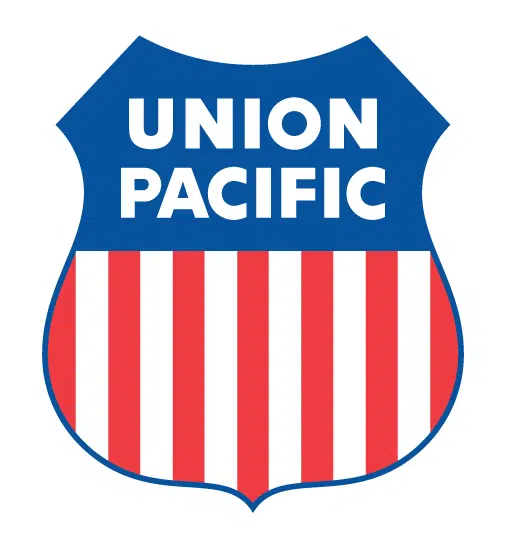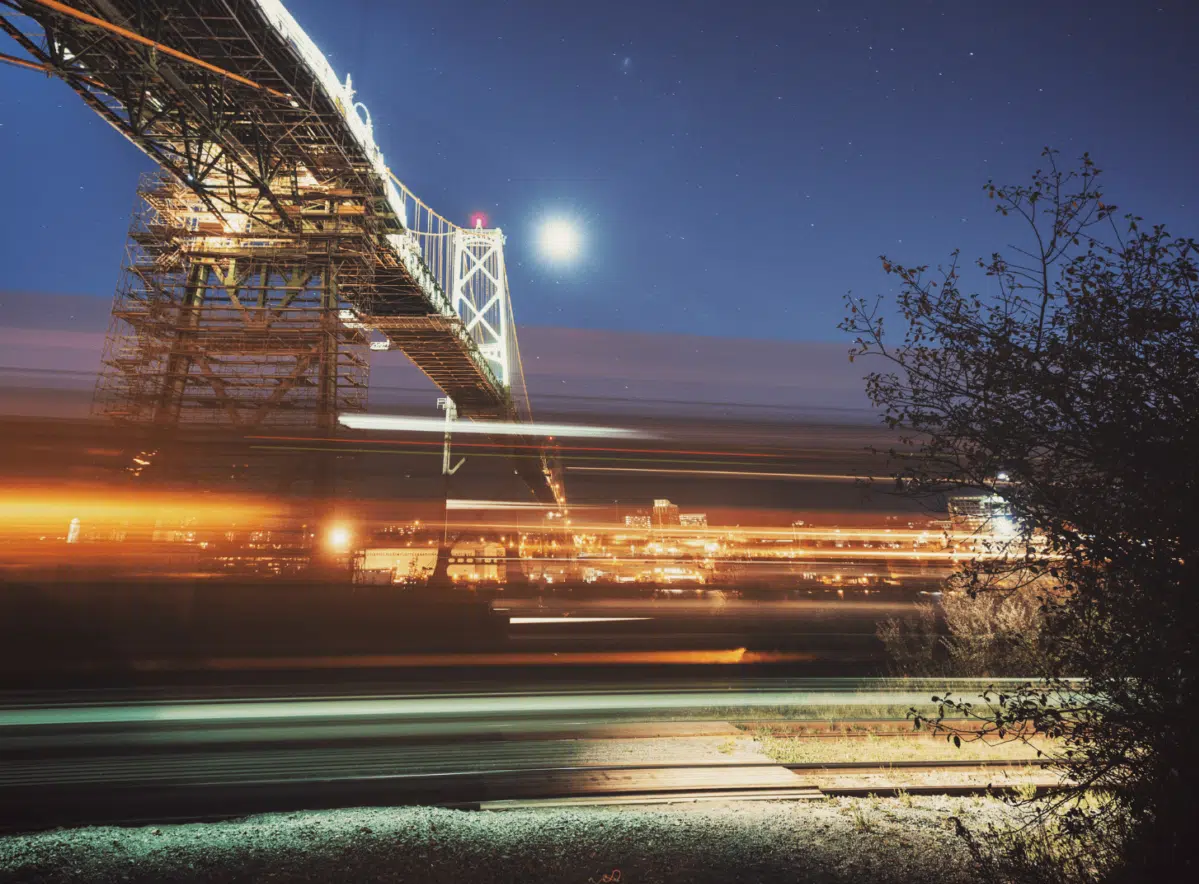Key Takeaway: Each year, freight rail companies invest an average of $23 billion to bolster and modernize their privately owned nationwide networks. Investing six times more than the average U.S. manufacturer, railroads funnel their money into increasing safety, reducing GHG emissions and improving service.
Nearly every goods-related industry relies on freight rail to get its products to market in the U.S. and beyond. This critical, efficient, cost-effective network is the best in the world thanks to railroads’ billions of dollars in annual investments. Most of America’s freight railroads own, build, maintain, operate and pay for their infrastructure with little or no government assistance. The U.S. Department of Transportation expects total freight demand to grow 30% by 2040. This means today’s improvements are even more important for world-class service tomorrow.
Railroads privately invest billions of dollars across their nearly 140,000-mile national networks to increase safety, improve customer service and further drive down emissions. From 1980 to 2022, America’s freight railroads spent about $780 billion on locomotives, freight cars, tracks, bridges, tunnels and other infrastructure and equipment. Freight rail’s investments over the last 15 years are $1 billion more than Congress’s 2023 historic investments in rail and multi-modal programs in the IIJA and the Omnibus combined.
The average U.S. manufacturer historically spends about 3% of revenue on capital expenditures. The comparable figure for U.S. freight railroads between 2012 and 2021 averaged more than 18%, or six times higher.
Hover or tap to see number of Class I freight rail miles by state.
BY THE NUMBERS: AVERAGE AMOUNT SPENT BY CLASS I RAILROADS ON CAPEX & MAINTENANCE 1980-2022

Freight railroads make strategic investment decisions.
As markets, technologies and the environment have evolved over time, so has freight rail spending. Each investment is a carefully chosen decision backed by data and expert insights to bolster network safety, enhance efficiency, fuel business growth, meet customer expectations and fortify the network against the effects of climate change.
Customers & Capacity: Railroads invest in infrastructure, equipment and technology to adapt to changing customer and network needs in a dynamic marketplace.
Safety: Railroads collect data from tracks, wheels, locomotives and bridges to prioritize the investments that will keep freight rail the safest way to move goods over land.
Efficiency: Railroads invest in relieving network congestion, including through a multi-billion program in Chicago, the nation's busiest rail hub.
Regulatory Compliance: Railroads optimize their networks to adhere to economic and safety regulations. Smart policies allow for sustained investments.
-INVESTMENTS IN ACTION-
Safeguarding Communities & Employees
Leveraging comprehensive daily network data, railroads proactively address the primary factors contributing to accidents: human error and issues related to tracks and equipment. Dedicated to enhancing safety measures, railroads allocate resources to support first responder training, improve grade crossing safety and ensure the well-being of their employees.
These collective efforts since 2000 have resulted in a 42% reduction in the Class I mainline accident rate, a 50% decrease in the track-related accident rate and a 31% drop in the equipment-related accident rate.


In early 2023, CSX opened its third train inspection portal (TIP) on the busy mainline at Walthourville, GA, southwest of Savannah. The TIP, with high-speed cameras and machine vision, rapidly captures 40,000 images/second of trains at 60 MPH. Inspections take seconds for 20 trains daily, and advanced algorithms swiftly enhance issue resolution compared to manual inspections.


In 2022, Union Pacific invested in Intelligent Terminal, a suite of Artificial Intelligence (AI) planning tools used by yardmasters to optimize decision-making. A “Terminal Dashboard” is part of this set of tools, which provides real-time terminal performance visibility and conveys leading indicators that allow terminal management to proactively complete maintenance. Not only does Intelligent Terminal increase safety, but the technology also helps improve network fluidity.


Automated Track Inspections (ATI) speed up safety inspections and safeguard employees. Track inspection vehicles, or “track geometry cars,” can measure hundreds of thousands of track miles yearly. All the Class I railroads use this technology. Canadian National has invested in a program that includes ten in-revenue service railway cars that have traveled over 1.8 million miles since 2019. In 2022, CN launched third-generation inspection systems, which inspect additional components within track infrastructure and provide more preventative maintenance recommendations, reducing risk and improving network fluidity.


Acoustic bearing detectors play a proactive role in safeguarding employees and local communities along freight rail tracks. The detectors analyze the acoustic signature of vibration inside the wheel axles and can identify potential problems in a bearing that a visual inspection cannot. In 2023, Norfolk Southern added 13 new detectors to its freight rail network, stationing the devices of its highest-traffic routes to improve network safety and fluidity.


-INVESTMENTS IN ACTION-
Improving Customer Service
With industries ranging from agriculture and automotive to consumer goods and energy all depending on freight rail to move their goods seamlessly across the country, it’s vital that railroads efficiently deliver for their vast array of customers. From technologies that provide greater insight into customer shipments to building rail hubs near customer locations and adapting infrastructure to create more capacity, railroads invest in delivering reliable service tailored to customer requirements.

Freight railroads serve as essential infrastructure, attracting businesses to rail-connected areas. Norfolk Southern offers 825+ development-ready industrial sites, 300+ rail-to-truck transload facilities, and collaborates with 260+ short-line railroads. Ongoing projects include 33 companies planning facilities along NS or its partners' networks, such as Hyundai Motor Group's electric vehicle and battery manufacturing plant in Bryan County, GA, connected via the Georgia Central Railway to NS and CSX.


Efficient intermodal transportation moves countless products seamlessly across railroads, trucks and steamships. Freight rail's substantial private investments have established the world's most advanced intermodal rail network, reducing emissions, easing congestion, and enhancing trade. BNSF exemplifies this commitment with over $1.5 billion invested in the Barstow International Gateway — a cutting-edge 4,500-acre site in Southern CA. This integrated rail yard, intermodal facility, and warehouses are poised to create 20,000 jobs and alleviate congestion around the Ports of Los Angeles and Long Beach.



Railroads are essential for stocking grocery shelves with food, transporting 1.7 million food-related carloads annually. For temperature-sensitive items, like fruits and pharmaceuticals, freight rail's refrigerated boxcars (reefers) are crucial. CN's Brampton Intermodal Terminal showcases innovation by using remote technologies to monitor the temperature and operations of 40-foot international containers. This advancement enhances cargo visibility, transparency, and reliability, allowing swift temperature issue management while minimizing human error. CPKC has also added 1,000 refrigerated containers to their fleet to support the growth in international trade.



Sidings are track sections that allow trains to safely pass each other. In 2022, Union Pacific completed a 7.5-mile mainline track project east of Dallas, enhancing connectivity between Marshall and Keokuk sidings. This upgrade supports higher speeds, boosting traffic flow along the Little Rock, AK, to Dallas, TX route. Similarly, CPKC is investing in a new 1,150-foot bridge in Laredo, TX, allowing simultaneous two-way train operations and involving collaborative construction efforts on both U.S. and Mexican sides of the border.


In 2023, CSX expanded its partnership with Siemens Mobility to develop and implement software solutions for freight rail. Siemens Mobility's Controlguide Core Dispatch System (CDS) offers CSX continuous access and granular visibility into its network operations, allowing faster decision-making and route optimization for freight traffic. The Controlguide CDS improves CSX network operations for its customers nationwide while enhancing sustainability and efficiency through reduced fuel usage.

-INVESTMENTS IN ACTION-
Reducing Railroad Emissions
Despite representing only 1.7% of transportation-related greenhouse gas (GHG) emissions, freight railroads are committed to reducing emissions from locomotives and yards while also enhancing network resilience against climate-related threats like extreme heat and flooding. Thanks to these efforts, freight railroads are the most fuel-efficient way to move freight over land, with one train moving one ton nearly 500 miles on a single gallon of fuel.



CPKC and CSX are advancing their commitment to net-zero emissions by teaming up to deploy hydrogen locomotives. Using a conversion kit engineered by CPKC, CSX will retrofit one of its diesel locomotives into an advanced hydrogen unit. CPKC initiated the program in 2020, successfully converting various diesel locomotives into hydrogen-powered units using fuel cells and batteries to drive electric traction motors.


In 2022, BNSF began testing a B20/R80 blend of fuel, which is a mixture of 20% biodiesel and 80% renewable diesel. By working with their locomotive manufacturing partners, they hope to increase the amount of biodiesel and renewable diesel fuels we can use to operate our locomotives, which would translate into significant carbon intensity and emission reductions for their locomotive fleet.


Norfolk Southern is upgrading older DC-traction locomotives to AC-traction for fuel efficiency and lower emissions. About 100 locomotives have been revamped annually since 2016, continuing till 2025, totaling 1,000 upgraded units. DC-traction locomotives use simpler electrical current that flows in one direction, while AC-traction locomotives use more advanced alternating current that changes direction quickly. AC-traction is more efficient, powerful, and flexible, making trains run better and saving energy through technologies like regenerative braking. This overhaul could improve fuel efficiency by up to 25%, a substantial step towards sustainability and performance.


In 2020, CSX was the first railroad to test Wabtec’s new Trip Optimizer Zero-to-Zero technology. Trip Optimizer automatically controls the locomotive throttle and brakes to lower fuel burn based on dynamics like the terrain and speed restrictions. The railroad already uses Trip Optimizer technology across its mainline fleet of locomotives, helping us save about 38 million gallons of fuel a year – or an average savings of 1.4 gallons of fuel per auto mile. Trip Optimizer Zero-to-Zero technology is expected to help save an additional five million gallons of fuel per year. As of April 2023, CSX continues to work with the FRA to test and implement the technology.

